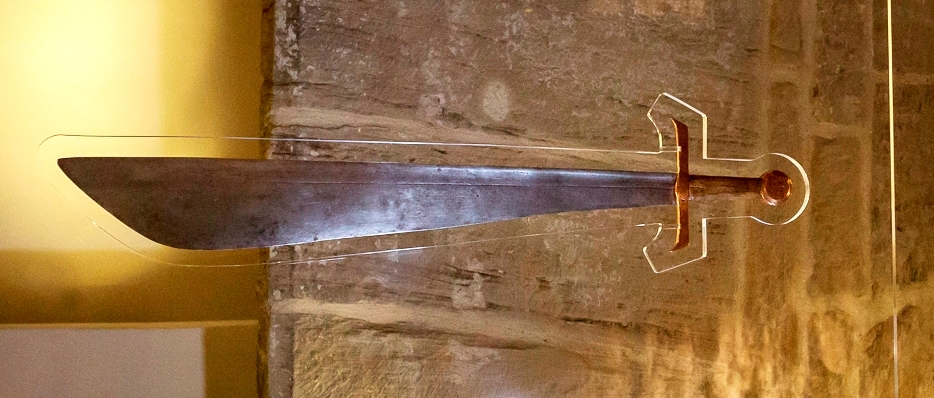“My Lord Bishop, I hereby present you with the falchion wherewith the champion Conyers slew the worm, dragon or fiery serpent which destroyed man, woman and child; in memory of which the king then reigning gave him the manor of Sockburn, to hold by this tenure, that upon first entrance of every bishop into the county the falchion should be presented.”
Those are the words spoken at the bridge at Croft-on-Tees whenever a new Bishop of Durham enters the diocese for the first time. But is there any truth to them?
The Conyers family probably arrived with William the Conqueror in 1066 and were granted lands in the area between 1099 and 1133. It is around this time that legend says John Conyers supposedly slayed the Sockburn Worm. A label once attached to the falchion said that this took place in 1063 which is interesting since the Conyers family didn’t arrive in England until three years later. They aren’t mentioned in the historical record until Roger Conyers is appointed Constable of Durham Castle by William.
The earliest description we have of the encounter between Sir John and the Worm comes from a manuscript dated to the time of King Charles I (1625-1649) which tells of a “monstrous venoms and poysons wiverms…which overthrew and Devourd many people in fight, for the scent of the poison was soo strong”.
The falchion itself isn’t mentioned until 1396 when it is noted that Sir John Conyers “by the service of showing to the Lord Bishop a falchion” acknowledged that the Bishop was the temporal and spiritual ruler in the area. Stylistic evidence would suggest it was made between 1260 & 1270.
This falchion is 89cm long and less than three pounds in weight. The pommel and cross are made of bronze with the handle made of ash. The cross includes a dragon motif which has led some to suggest that the Worm story came after the creation of the falchion. The pommel has three lions on one side (a design that did not enter use until 1154 under King Henry II) and a winged eagled on the other. There are two theories behind the eagle. The first is that it is a design commonly used by the King of the Romans, a title held by Richard of Cornwall, the younger brother of King Henry III in 1257. A similar design was also given to Morcar, a Saxon Earl of Northumbria who died in 1087 which might indicate that the falchion was a copy of an earlier sword.
In 1826 the falchion was presented on Croft Bridge to Bishop Van Mildert by Sir Edward Blackett. This would be the last time in over 160 years that it was presented in a public ceremony. When it was presented in June 1860 to Bishop Villiers it was in a private ceremony in his rail carriage when the train he was on stopped in the middle of the bridge.
In 1855 Lewis Carroll published the first verse of the nonsense poem that would become Jabberwocky. He wrote this verse at Croft-on-Tees, where his father was once rector and Carroll himself lived, while the rest of the poem was written at Whitburn near Sunderland. It is likely that the Jabberwock creature was inspired by the Sockburn and Lambton Worms and it’s very possible the falchion was the inspiration for the Vorpal blade used to kill the beast.


I find this very interesting, since I believe from my research that Roger Conyers is a direct ancestor of mine. I’ve been building a family tree on MyHeritage.